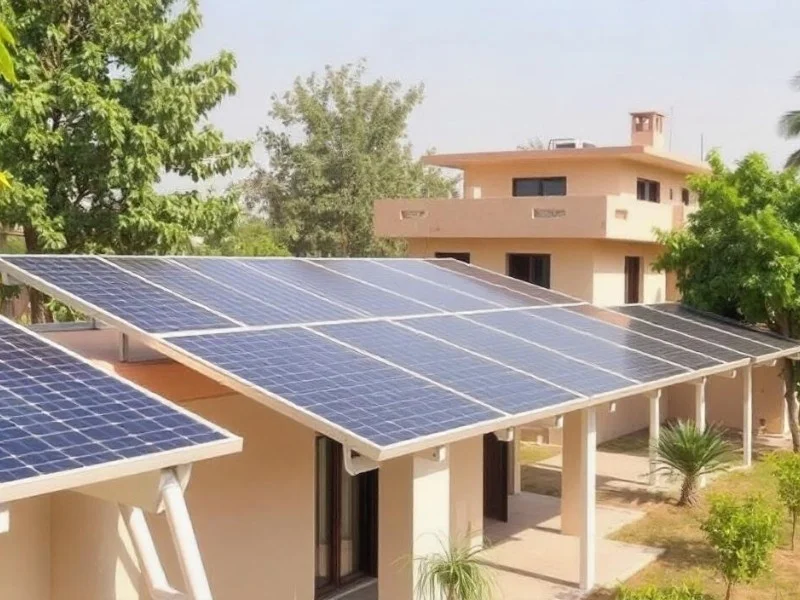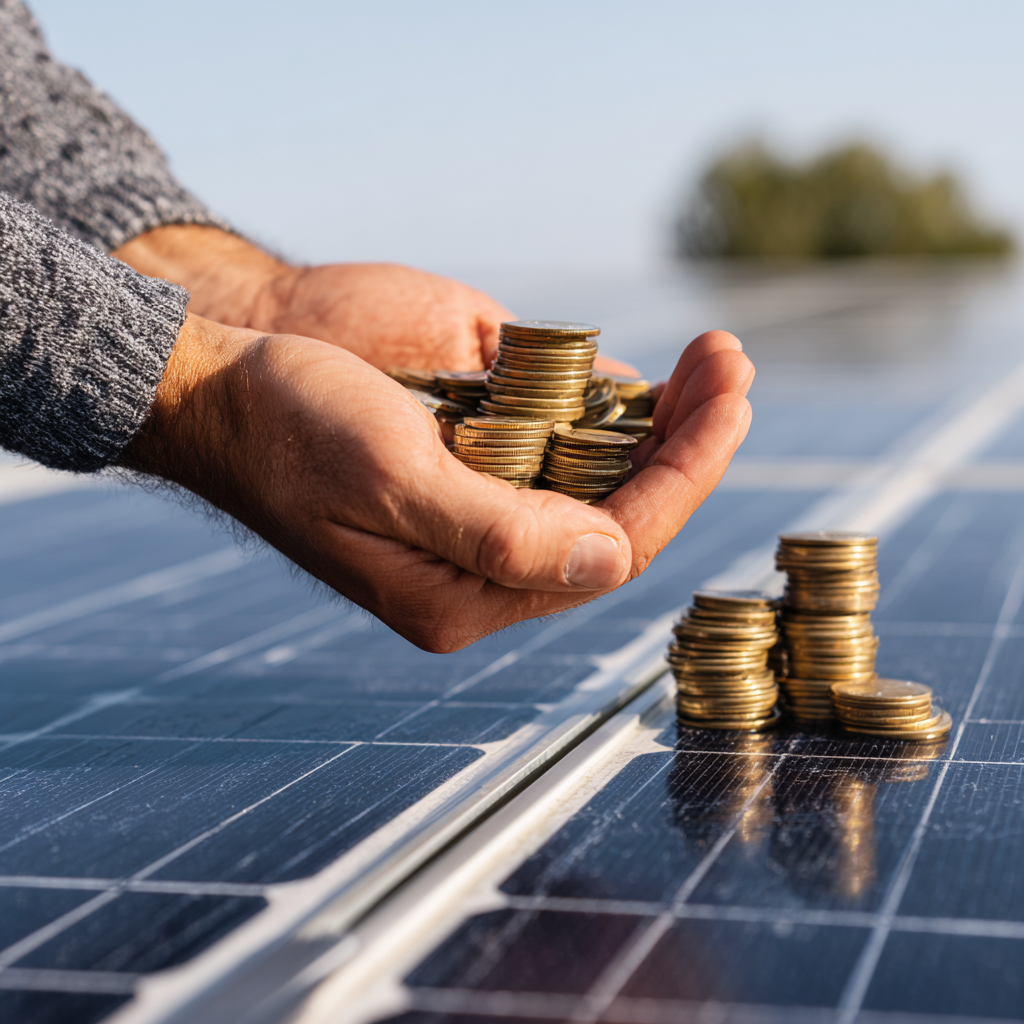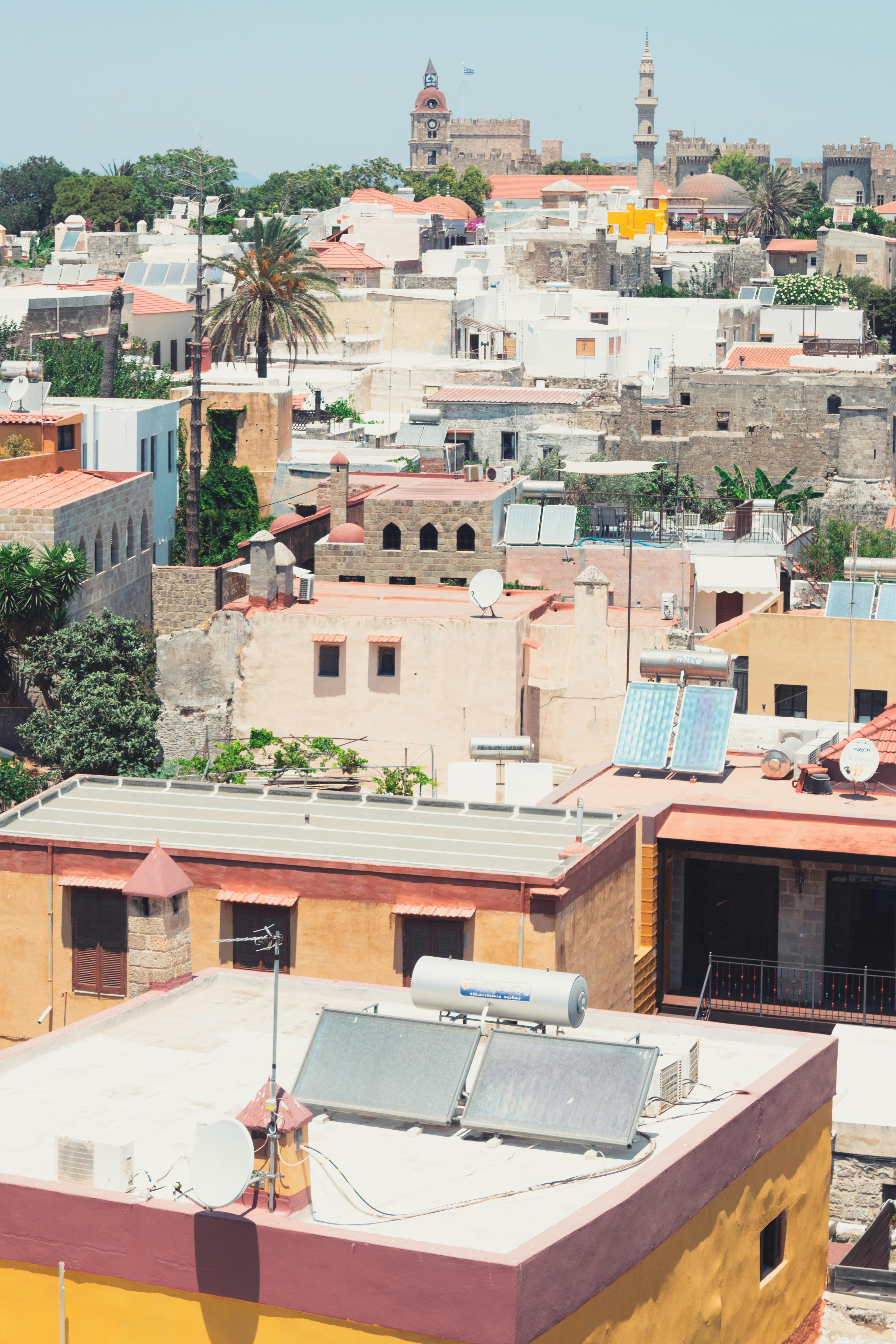Welcome to the Rooftop Solar Glossary, your ultimate resource for understanding the world of rooftop solar energy. Whether you're a homeowner, business owner, or solar enthusiast, our comprehensive glossary is designed to demystify the terminology and concepts related to rooftop solar installations. As the adoption of rooftop solar systems continues to grow, understanding the key terms and technologies becomes crucial in making informed decisions and optimizing your solar investments. Dive into our glossary to discover the definitions, explanations, and insights you need to navigate the dynamic landscape of rooftop solar energy with confidence.
AC or DC
AC stands for Alternating current whereas DC stands for Direct current. All the households or machines run on AC power. The equipment that runs on batteries is called a DC power appliance.
ACDB
AC Distribution box holds all the connections from the inverters and hosts protective equipment like circuit breakers and surge arrestors etc.
Array
Group of solar panels.
Azimuth Angle
The solar azimuth angle is the horizontal angle between a reference direction (typically due south in the Northern Hemisphere) and the sun. InIndia, we try to install the solar panels in the south direction in order to get the maximum radiation from the sun.
Billing Cycle or Billing Period
It is the period for which regular electricity bills are prepared for different categories of consumers by the DISCOM.
Bill of Material/ BOM
Consists of all the components required for a solar plant.
Connected load
Itis expressed in kW, kVA, or HP, refers to the rated capacities of all the energy machines or lightning load connected with the grid on the consumer’s premises which can be operated simultaneously. You can find the ‘Connected Load' for your facility/premise in your electricity bills.
Contracted load / Demand or Sanctioned load / Demand
It is the maximum demand in kW,kVA or HP, agreed to be supplied by the distribution company and indicated in the Electricity bill. The contract demand can be revised as per the requirement of the consumer.
Commissioning
It is the process of completion of the project. Once the Structure, modules,inverters, cables, and earthing all are installed, the process of interconnection at the customer LT or HT Panel after testing the plant.
Circuit Breaker
Circuit breakers protect your system from faults, fires, and damage.
DISCOM
Short for Distribution Company. DISCOM is your electricity provider, also commonly known as Utility Provider. This can differ from state to state and even there could be multipleDISCOMs in a city. Examples MSEDCL, Tata, Adani,Torrent etc.
DG
Diesel Generator. Please note there are devices and mechanisms where you can synchronize your DG with your solar plant as well.
Efficiency
Efficiency in solar energy can be related to several different steps of the solar power production process. Primarily, solar panel efficiency is a measure of how well a solar panel can convert sunlight into electricity. Separately, the performance of a full solar power system can also be measured using several efficiency metrics.
Electric Panel
An electric panel(also known as a service panel, distribution board, or breaker) it has a hub,and both grid and solar-generated power travel through your electric panel.
Energy Audit
An energy audit is an assessment of your home/facility’s energy consumption and efficiency. When performed by a professional, an energy audit will provide a full analysis of how your home/facility’s uses power, including opportunities to increase energy efficiency with lighting, appliances, insulation, or other solutions.
Grid-Tied
A grid-tied solar energy system (also known as a On-Grid,) is by definition, one that is connected to the utility grid. Most of the solar rooftop plants connected inIndia are Grid-tied solar plants. This also gives the benefit of Net-Metering.
Irradiation
Solar radiation or irradiation is the incident energy received per unit area of a surface for a particular period(either hour or day), measured in kW h/m2 or J/m2.
Inverter
An inverter is perhaps the second-most important element of a solar power plant after solar panels. Used to convert new DC solar power into usable AC electricity. There could be one or more inverters in a system depending on the size of the solar plant and size of the inverter.
kilowatt (kW)
A kilowatt is a unit of energy that is equal to 1,000 watts. Most electrical equipment is rated in watts, including refrigerators, microwaves, and solar panels. Referring to the total wattage of all of the installed panels, most solar energy systems are rated in kilowatts.
kilowatt-hour (kWh)
A kilowatt-hour is a measurement of electricity usage, specifically one kilowatt of energy over one hour (60 minutes). Much like how your energy bill is calculated using kilowatt-hours, the amount of electricity produced by your solar panels is also measured in kWh.
kilowatt Peak (kWp)
Since radiation from the sun varies along the day, the output of the solar panels also varies throughout the day. When solar panels are rated, they are rated as per their Peak capacity i.e. when the solar radiation is at its peak. For example, a 500Wp panel will give 500W power only during its peak hours.
O&M
Operation and Maintenance include preventive maintenance of the plant. This can include technical visits,cleaning of solar panels and also visits in case of faults.
Net Metering
Net metering is a mechanism in which the solar plant is grid-tied, and consists of a bi-directional net meter, that records the electricity imported and exported by the system. In case the demand is higher which the solar plant is unable to suffice, the electricity is imported from the grid and when the solar plant generates more than the demand, then electricity is exported. This transaction is recorded for every month and it is reflected in the electricity bill.
Incase you exported more than you imported, the units are carry forwarded to the next month and electricity bill is nearly zero (except the fixed charges as perthe DISCOM).
Incase you imported more than you exported, then you only pay for the net export,hence resulting is huge savings.

PV/ Photovoltaic
Radiation from the sun has two components, the light part and the heat part.The light part is used to convert light into electricity. The light comes in the form of pockets called Photos which are particles of light, photons= Photo and since a potential is developed when photos fall on the panels, Voltage=Voltaic. So, whenever you come across something called a Solar photovoltaic system it means, the system is converting light into electricity.
Liaisoning
Process of getting the approvals from the DISCOM for the Net metering process.
LT or HT Panel
LT stands for Low Tension Power whereas HT stands for High Tension Power. When the solar power is connected to the customer panel at 230 or 415V it is considered an LT connection and if it is more than that it is considered an HT Connection.
Micro Inverter
An alternative to a central string inverter, microinverters are used to convert the power generatedby individual solar panels one at a time. Micro Inverters are typically located on the undersides of solar panels.
MPPT
Maximum Power point tracking, it is a mechanism that allows the inverter to utilize the power of the sun to the fullest and give maximum output possible.
Soiling
The dirt or dust deposition formed on the solar panels. Soiling can reduce the performance of the plant and hence it is advised to clean the solar panel regularly.
String
String Is also a group of panels, except here they are connected to each other serially via cables.
Supply Voltage or Supply Connection Type
It is the voltage at which the consumer is getting the primary power from the grid, and it is mentioned in the ElectricityBill. Ex. 230V, 415V, 11kV, 33kV, 66kV, 132kV etc. When the voltage is 230 or415V it is considered LT Power or LT Connection or else it will be HTConnection.
Units
It is synonymous with kWh but used in day-to-day communication and for ease of communication.
We hope this resource has provided you with valuable insights into the terminology and concepts that power the rooftop solar industry. As you continue your journey towards harnessing the sun's energy, our glossary will be here to support you with accurate and up-to-date information. Stay connected with us for more updates and expansions to our glossary, ensuring you always have access to the knowledge you need to make informed decisions about your rooftop solar projects. Remember, understanding is the first step to empowerment in the world of solar energy.

.webp)
.webp)
.webp)


.jpg)







.jpg)





.jpeg)












.jpg)


.png)
.png)
.png)
.png)
.png)
.png)

.png)


.jpg)
